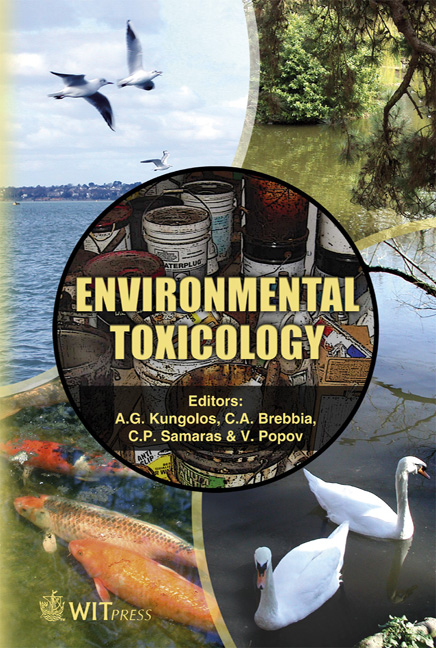Set-up Of A Dynamic In Vitro Exposure Device For The Study Of Indoor Air Pollutant Effects On Human Derived Cells
Price
Free (open access)
Transaction
Volume
10
Pages
9
Published
2006
Size
375 kb
Paper DOI
10.2495/ETOX060231
Copyright
WIT Press
Author(s)
F. Pariselli, M. G. Sacco & D. Rembges
Abstract
Exposure to air pollutants such as volatile organic chemicals (VOCs) is recognized as a potential cause of allergies, asthma, mucous irritation, headaches and tiredness and may substantially contribute to the increase of cancer incidence in the population. Their presence is not limited to urban and workplace environment but in homes, offices, schools, and hospitals at concentrations often much higher than outdoors. As the number of chemical products created is still increasing, the study of the toxic effects of VOC mixtures requires the development of an effective and reproducible technique for in vitro exposure of cell culture to air pollutants as an alternative tool to in vivo tests. The aim of this work was to develop an in vitro exposure set-up for the assessment of the toxicity of single volatile chemicals and their mixtures on representative VOCs target tissues: skin and lung. We used a dynamic exposure module, named CULTEX ® , where human derived cell lines from lung epithelium (A549) and keratinocytes (HaCaT) were exposed in an air/liquid interface to a low flow of air pollutants mixture as a close simulation of in vivo exposure. Exposure to toluene or benzene concentrations showed reproducible and dose-related direct toxic effects on both cell lines. Moreover, benzene or toluene induced an inflammatory response. The results obtained so far show the sensitivity and specificity of the overall CULTEX ® exposure module that could allow one to conduct further investigations on the effects of mixture of air pollutants on these representative target tissues. Keywords: dynamic exposure device, inflammatory response, in vitro cytotoxicity, volatile organic compounds.
Keywords
dynamic exposure device, inflammatory response, in vitro cytotoxicity, volatile organic compounds.





